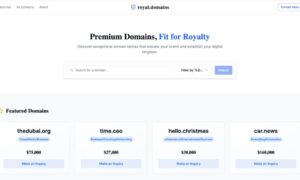In today’s digital age, accessibility has emerged as a critical component of technology development and deployment, with profound implications for economic growth and societal inclusion. Government contractors, tasked with providing a wide range of products and services to public agencies, play a pivotal role in driving innovation and fostering economic prosperity through their engagement in accessibility programs.
This article aims to examine the broader economic impact of accessibility initiatives for government contractors, highlighting their role in driving innovation, stimulating demand for accessible technology solutions, and fueling economic growth.
Stimulating Demand for Accessible Technology Solutions
Accessibility programs for government contractors are instrumental in stimulating demand for accessible technology solutions. As public agencies increasingly prioritize accessibility and inclusivity in their procurement processes, contractors are compelled to develop products and services that meet stringent accessibility standards and cater to the diverse needs of users with disabilities.
Investments in accessibility initiatives ensure compliance with legal requirements such as Section 508 of the Rehabilitation Act and position contractors as leaders in the market for accessible technology solutions. By leveraging their expertise in accessibility and incorporating universal design principles into their products and services, contractors can appeal to a broader customer base and gain a competitive edge in the marketplace.
Moreover, accessibility-driven innovation, like free government tablets, often yields products and services that benefit all users, not just those with disabilities. Features such as intuitive user interfaces, customizable settings, and multi-modal interaction capabilities enhance the usability and utility of technology solutions for everyone, thereby expanding market opportunities and driving demand for accessible products and services.
Fueling Economic Growth and Job Creation
The economic impact of accessibility programs extends beyond market expansion to fueling economic growth and job creation. By investing in accessibility initiatives, government contractors contribute to the development of a thriving ecosystem of accessible technology innovation, entrepreneurship, and investment.
Accessibility-driven innovation drives demand for skilled labor in areas such as software development, user experience design, and accessibility testing. As contractors strive to meet the growing demand for accessible technology solutions, they create jobs and opportunities for individuals with expertise in accessibility and digital inclusion, thereby fueling economic growth and promoting workforce development.
Furthermore, accessibility programs foster collaboration and partnership among government agencies, contractors, advocacy organizations, and technology providers, creating synergies that drive innovation and accelerate progress toward a more inclusive digital society. By working together to advance accessibility standards, share best practices, and develop innovative solutions, stakeholders across the accessibility ecosystem contribute to economic growth and prosperity for all.
Positive Ripple Effects on Productivity
Accessibility programs for government contractors have positive ripple effects on productivity, competitiveness, and workforce diversity. By ensuring that technology solutions are accessible to individuals with disabilities, contractors empower users to participate fully in the digital economy, access information and services, and engage in employment, education, and civic life.
Accessible technology solutions also enhance productivity and efficiency in the workplace by removing barriers to access and enabling employees to perform their jobs more effectively. Features such as screen readers, voice recognition software, and captioned media facilitate communication, collaboration, and information access for employees with disabilities, thereby improving overall workforce productivity and performance.
Moreover, investments in accessibility initiatives contribute to greater competitiveness and market differentiation for government contractors. By demonstrating a commitment to accessibility and inclusivity, contractors enhance their reputation, build trust with customers and stakeholders, and position themselves as preferred partners for public agencies seeking accessible technology solutions.
Additionally, accessibility programs promote workforce diversity by creating opportunities for individuals with disabilities to participate meaningfully in the technology industry. By fostering an inclusive and supportive work environment, contractors attract and retain talented employees from diverse backgrounds, perspectives, and abilities, driving innovation, creativity, and competitiveness in the workforce.
In conclusion, the economic impact of accessibility programs for government contractors is far-reaching and multifaceted. They drive innovation, fuel economic growth, and promote social inclusion. By investing in accessibility initiatives, contractors stimulate demand for accessible technology solutions, create jobs and opportunities for skilled workers, and foster collaboration and innovation across the accessibility ecosystem.
Moreover, accessibility programs have positive ripple effects on productivity, competitiveness, and workforce diversity, enhancing overall economic prosperity and contributing to a more inclusive and equitable society. As government contractors continue to prioritize accessibility and inclusivity in their products and services, they play a vital role in shaping the future of technology innovation and driving positive social and economic outcomes for all.



































